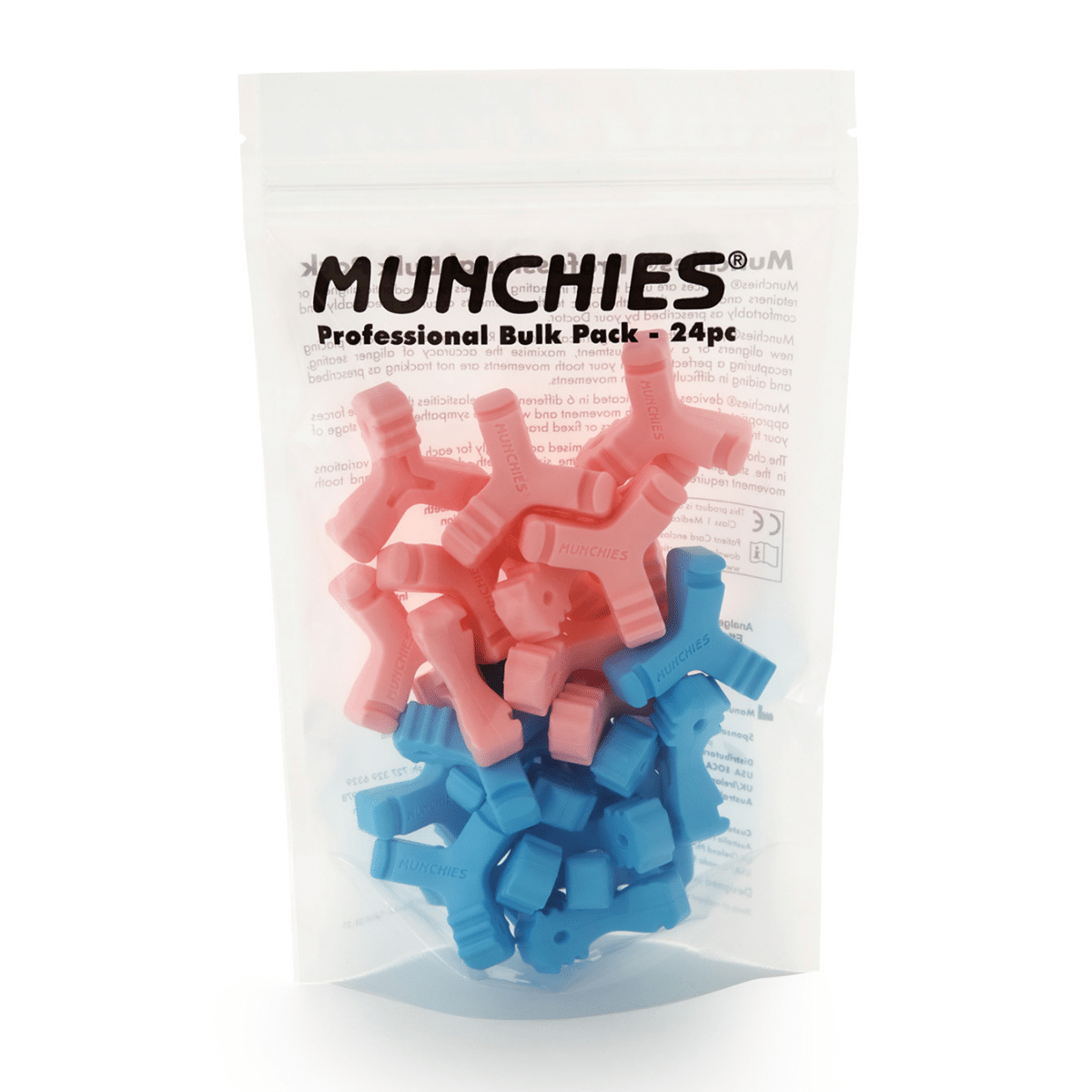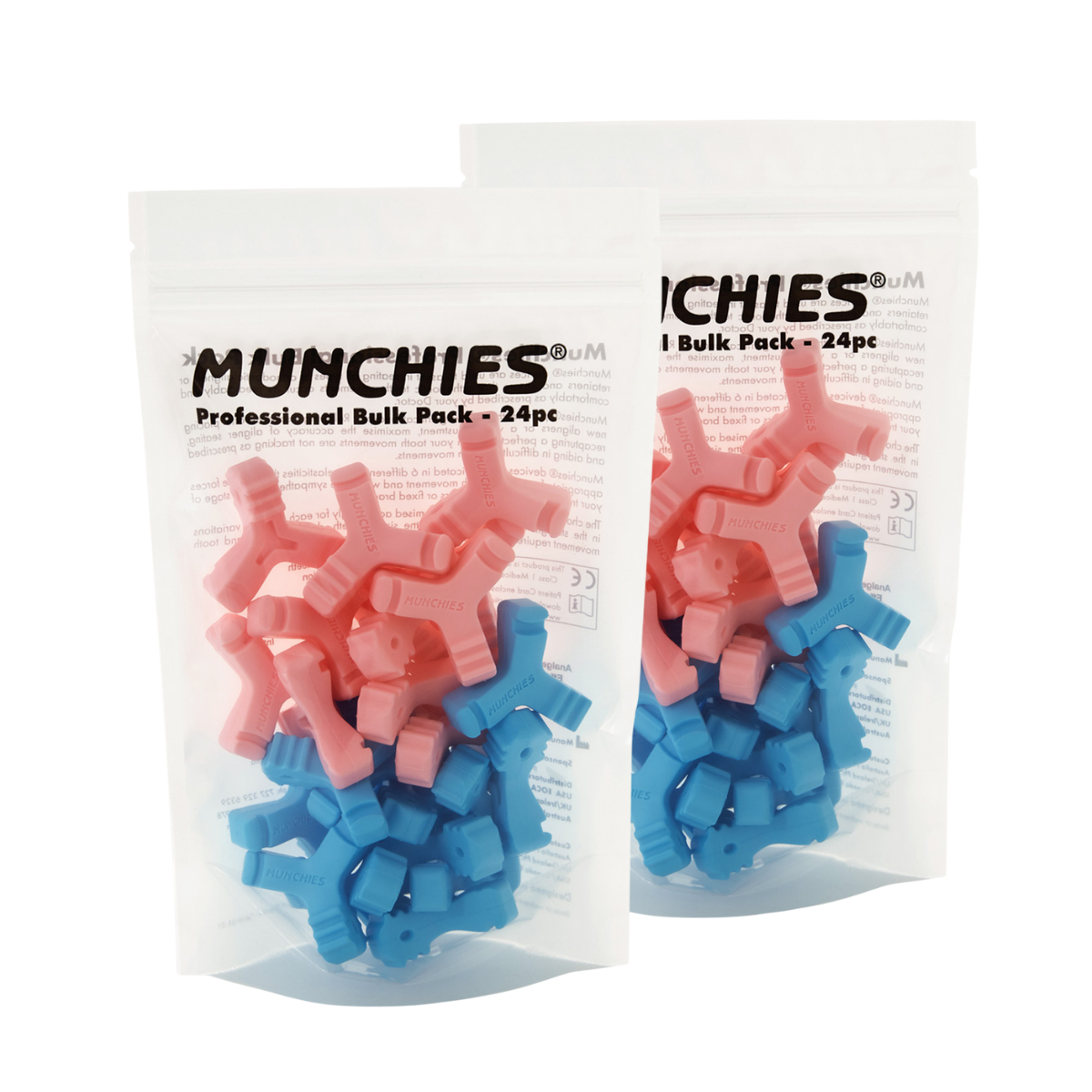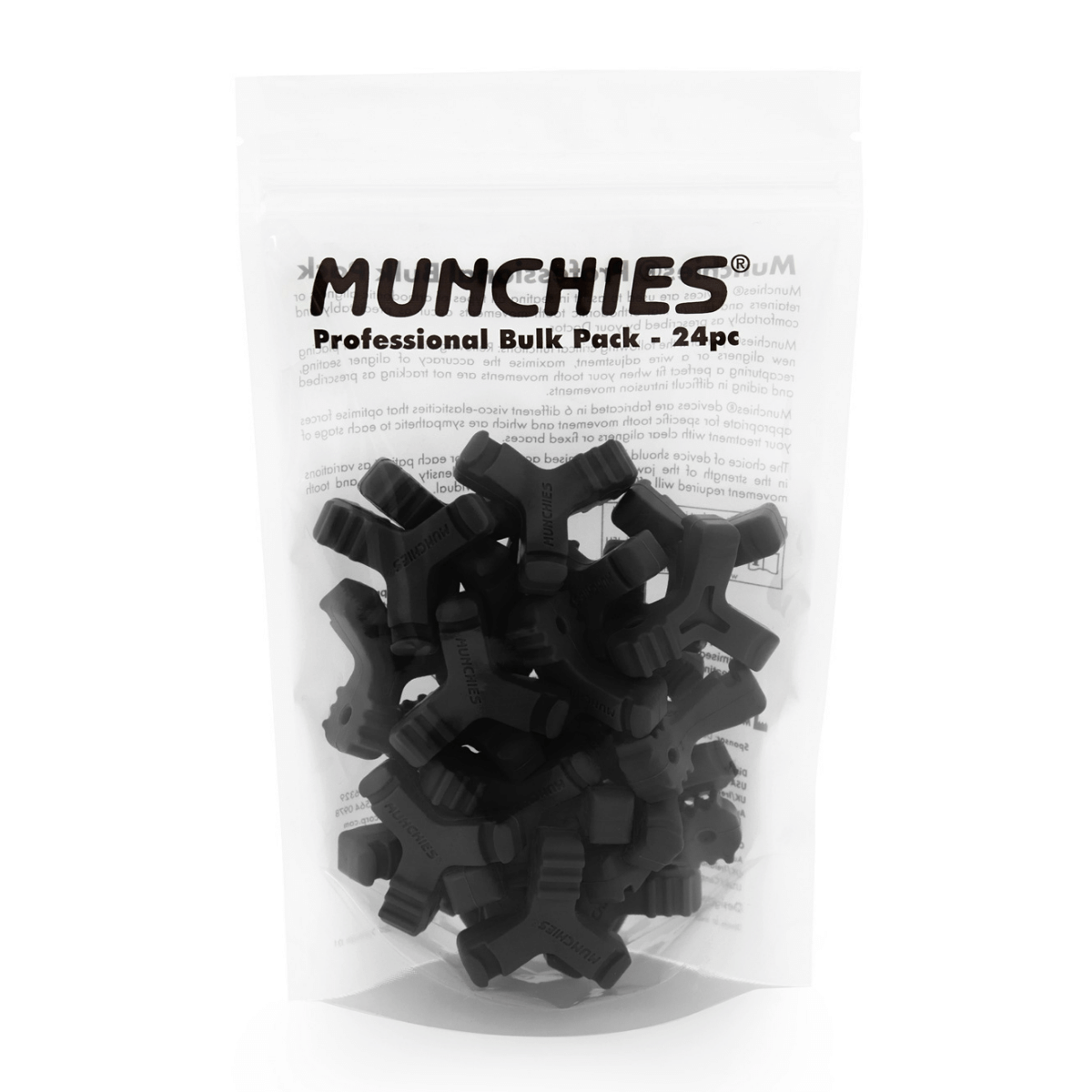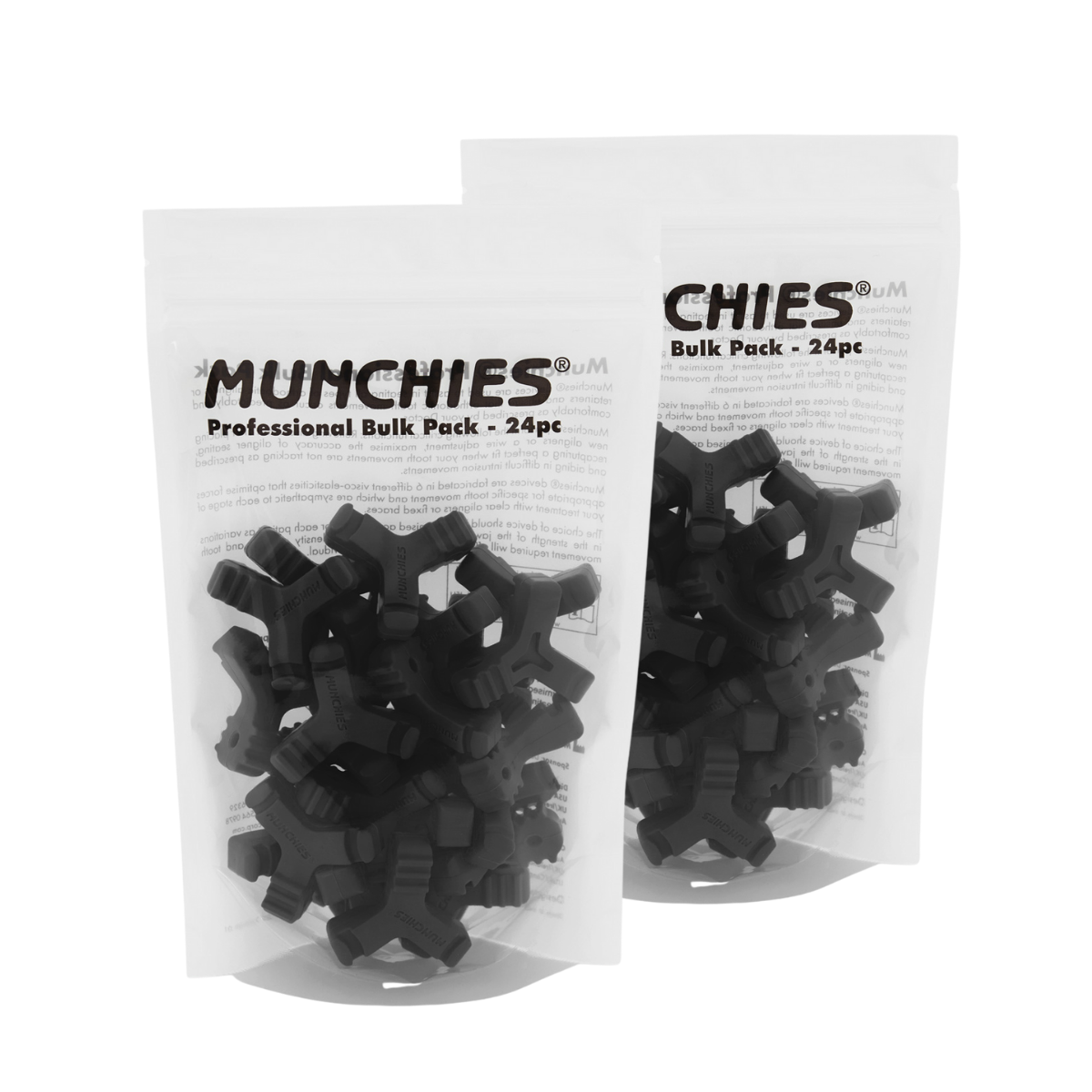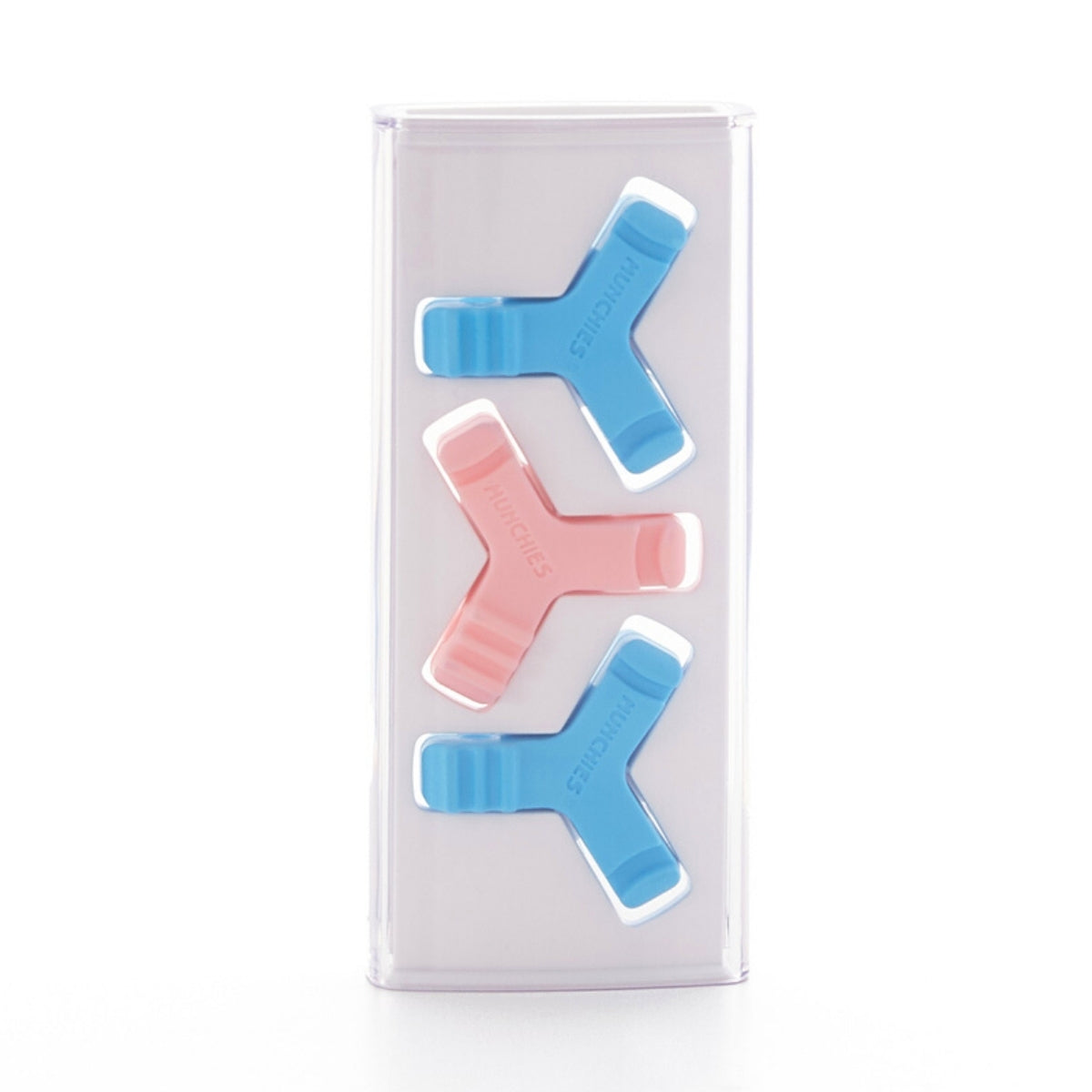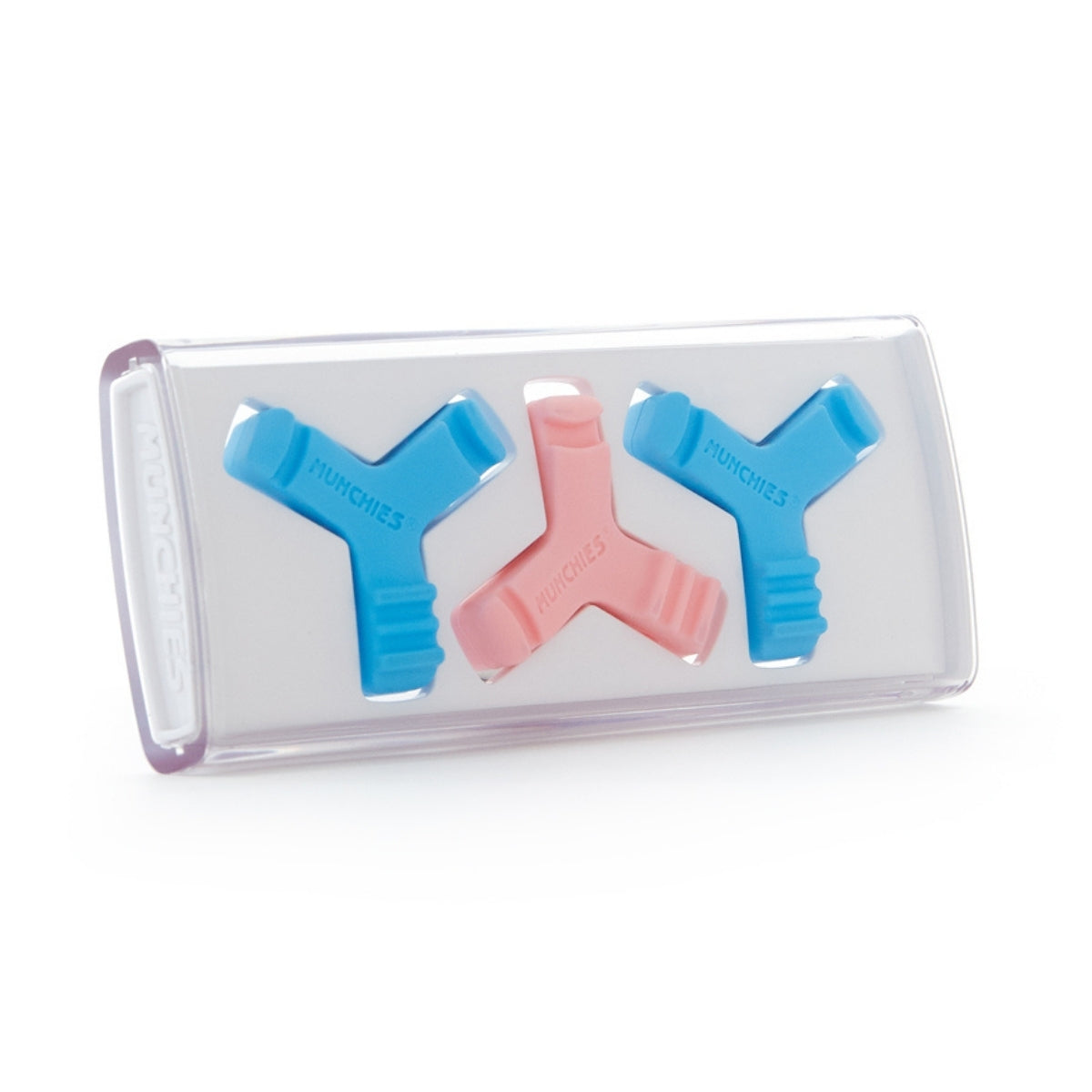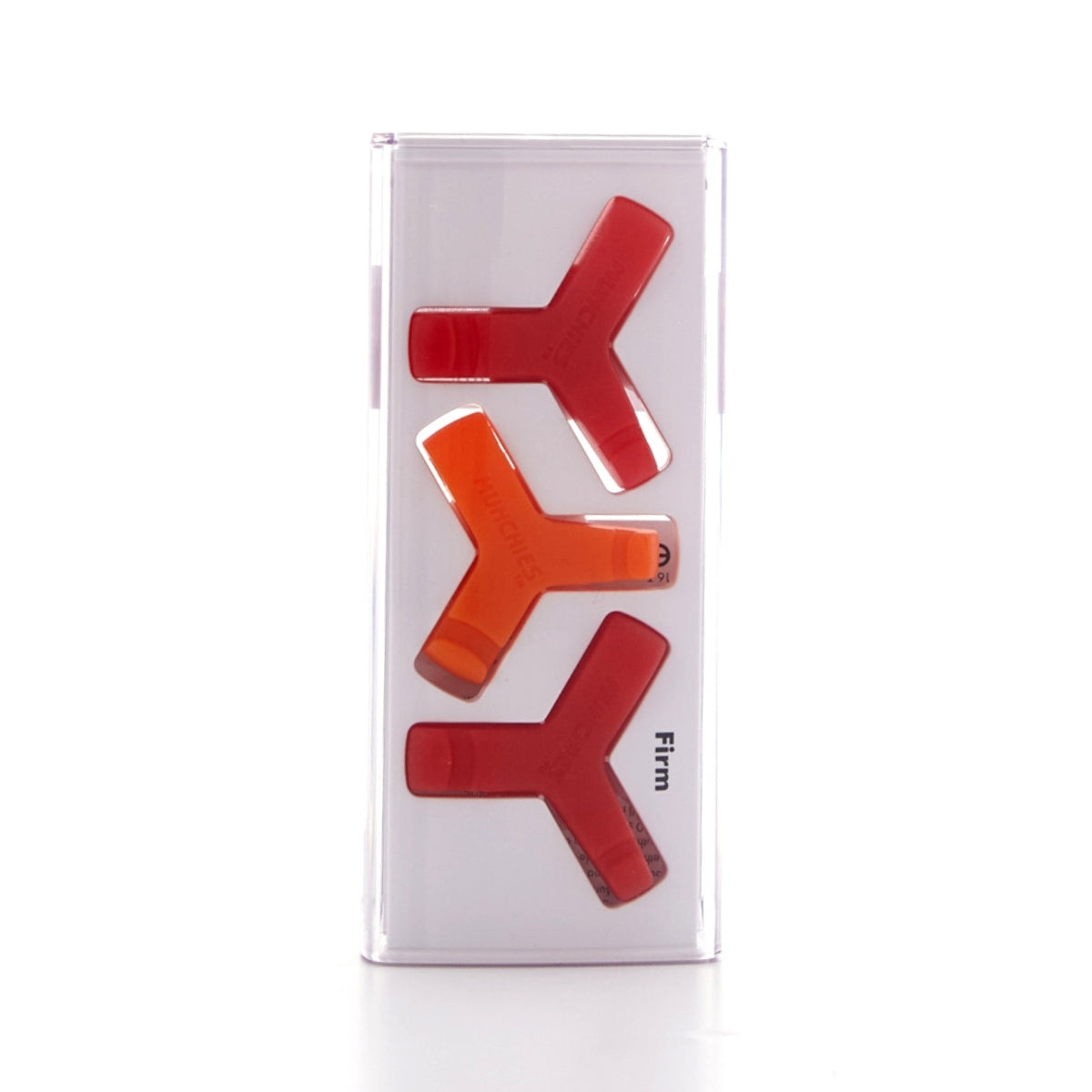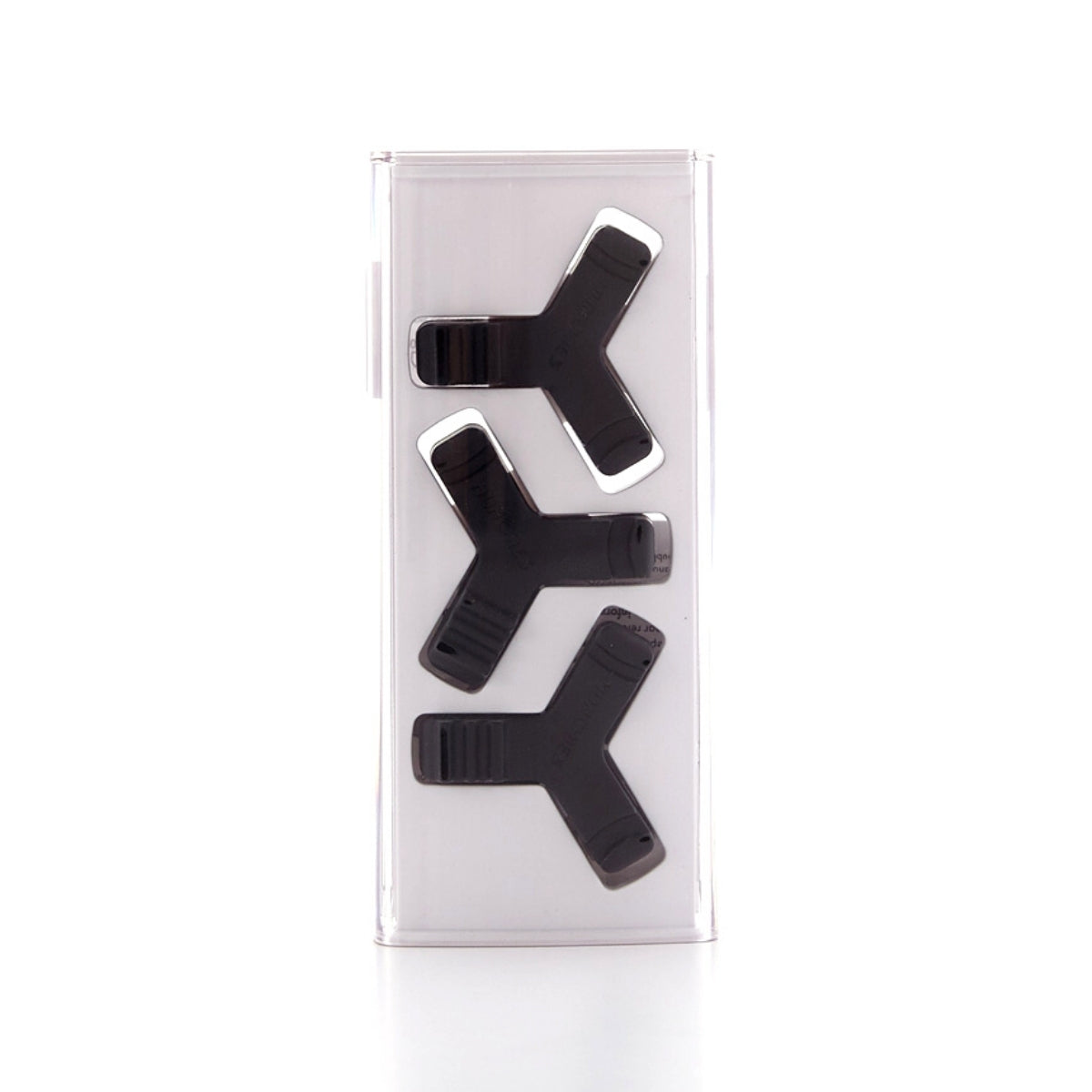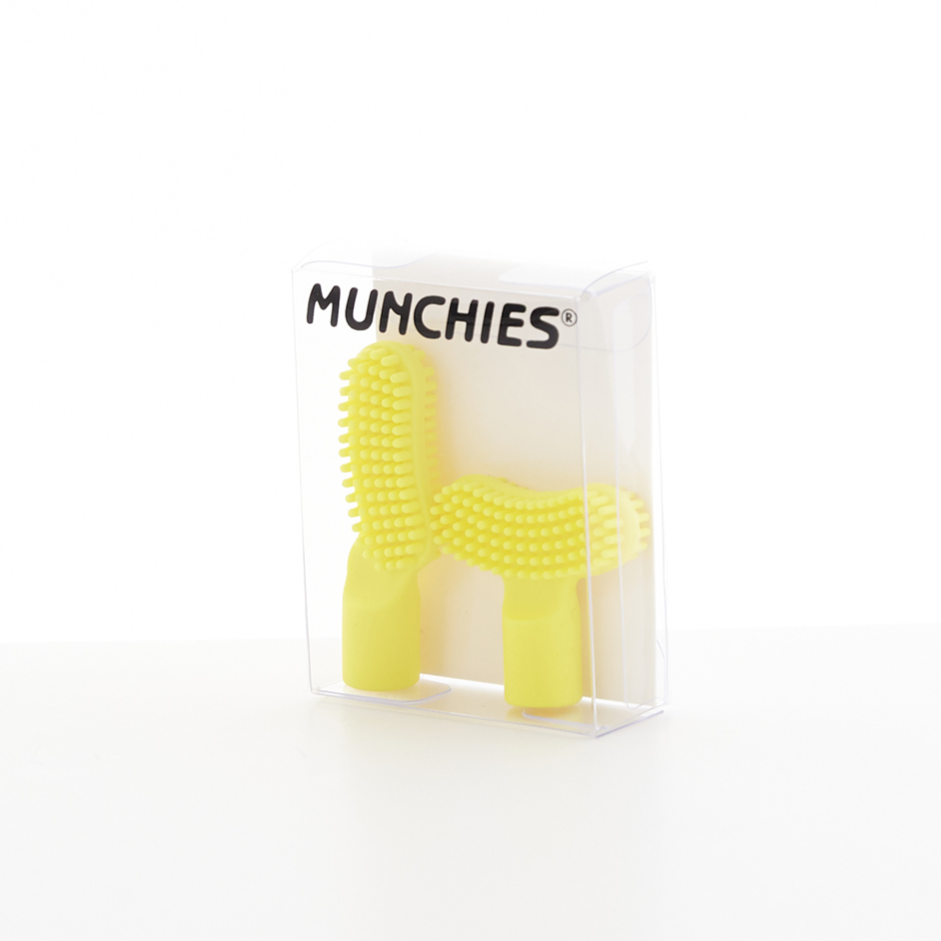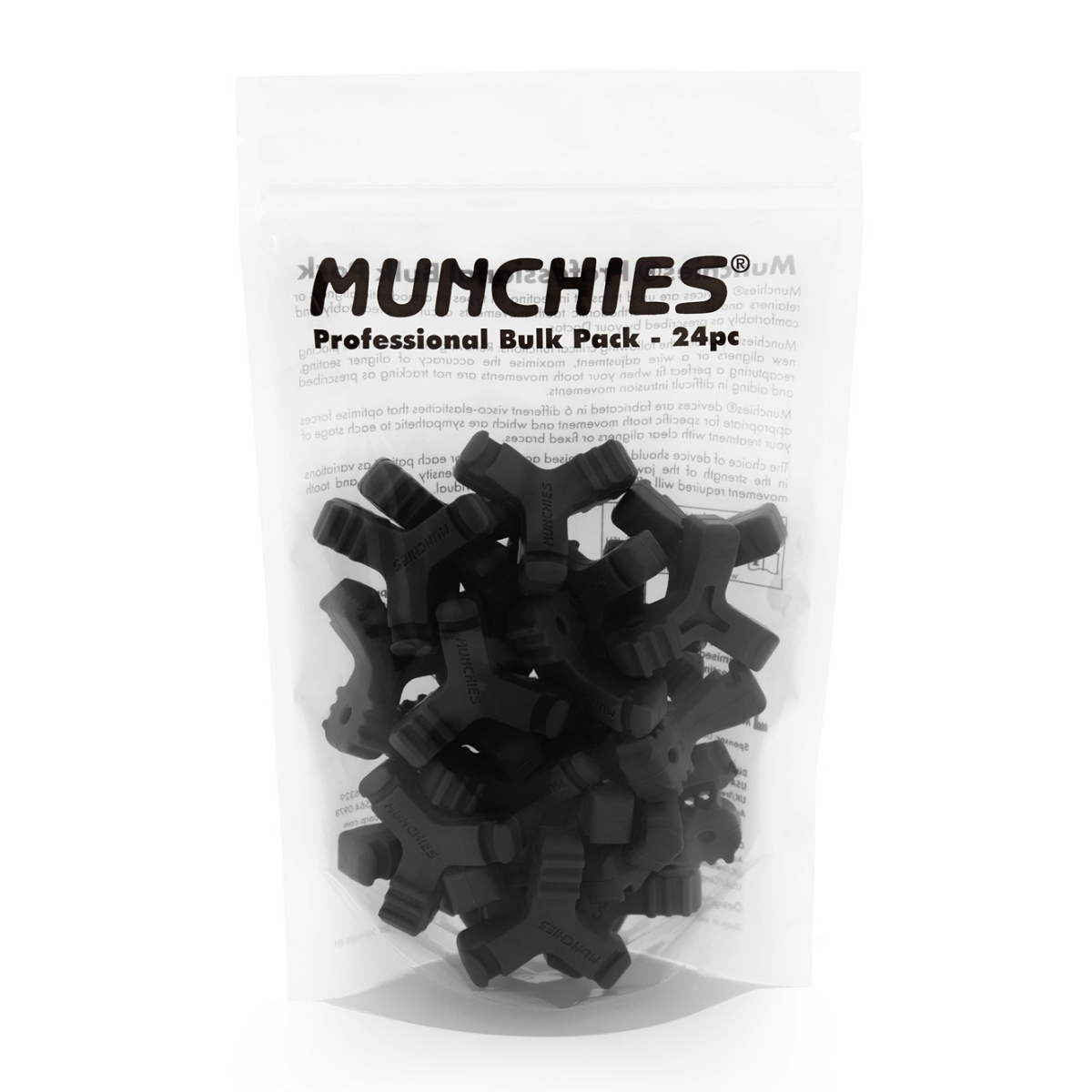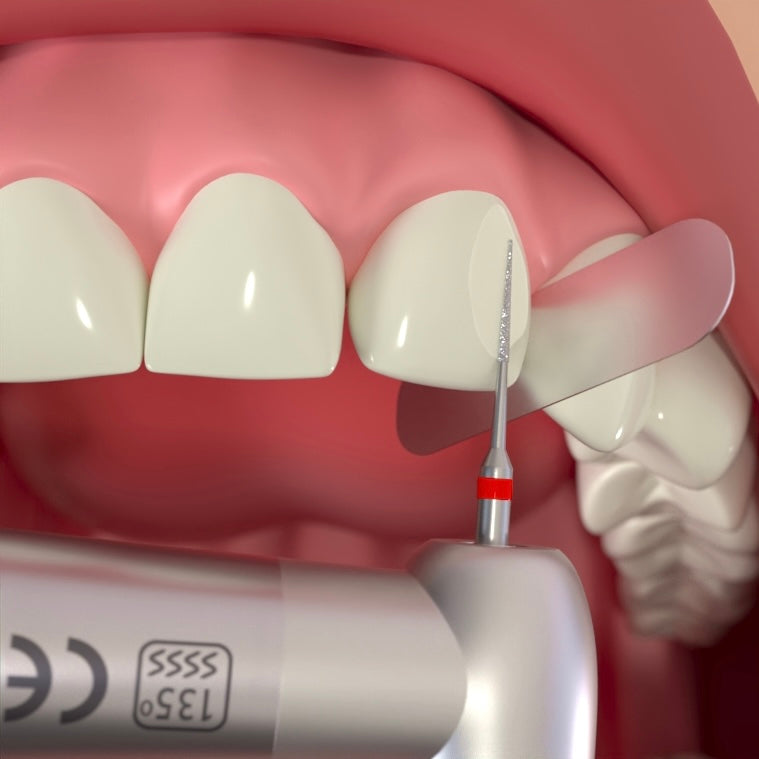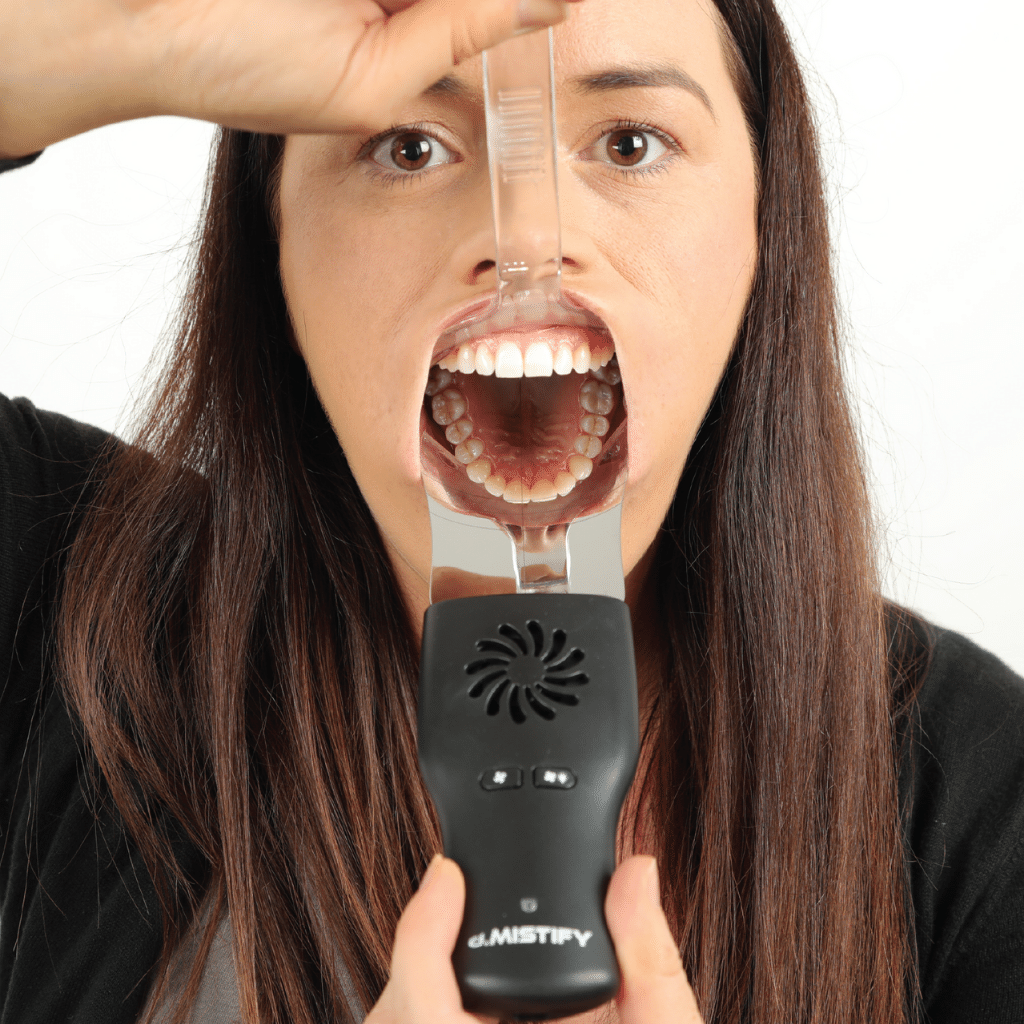Why is the VIBE II superior to other devices?
The brilliant segmentalised design of Vibe II ensures that all areas of the mouth, regardless of the occlusion or occlusal plane, receives an equal distribution of HFA forces. Other flat plane devices simply cannot deliver forces to all teeth simultaneously and produce poor clinical results.

Thirty patients with initial Class I skeletal relationships, initial minimum-moderate crowding (3–5 mm), treated to completion with clear aligners and adjunctive high-frequency vibration, (HFV group) or no vibration, (Control group) were evaluated.
The patients were instructed to change aligners as soon as they become loose. Changes in bone density associated with orthodontic treatment were evaluated using i-CAT cone-beam computed tomography (CBCT) and InVivo Anatomage®️ software to quantify density using Hounsfield units (HU) between treated teeth in 10 different regions. HU values were averaged and compared against baseline (T1) and between the groups at initiation of retention (T2).
RESULTS: The average time for aligner change was 5.2 days in the HFA group, and 8.7 days in the control group . There was significant T1 to T2 increase of HU values in the upper arch (P = 0.0001) and the lower arch (P = 0.008) in the HFA group. There was no significant change in average HU values in the upper (P = 0.83) or lower arches (P = 0.33) in the control group. The intergroup comparison revealed a significant difference in the upper, (P = 0.0001) and lower arches (P = 0.007)
CONCLUSION: High-frequency acceleration devices, adjunctive to clear aligners, allowed early aligner changes that led to shorter treatment time in minimum-moderate crowded cases.







